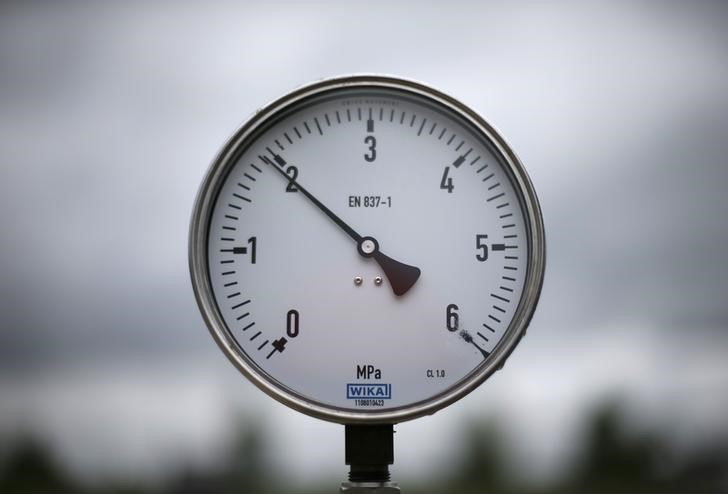By Barani Krishnan
Investing.com -- A little at a time. That seems the way forward for gas bulls after what has, for all intents and purposes, been a “brutal” winter — not in terms of cold but a lack of it.
The most-active April gas contract on the New York Mercantile Exchange’s Henry Hub settled Friday’s trade at $2.4510 per mmBtu, or metric million British thermal units, up 1.9 cents, or 0.8%.
That was in addition to the previous day’s 5.8% rise that added a little more insulation for the contract from a retest of the $2 support that would open the trapdoor for its plunge again into $1 territory.
For the week, Henry Hub’s most-active gas contract rose 4.3%, marking only the second positive week in 10 for futures of the heating oil.
March, the front-month contract on the hub, expired at Friday’s close, settling at $2.451. March gas fell to a 2-½-year low of $1.967 on Thursday.
The higher close of the past two sessions came after the Energy Information Administration reported that U.S. utilities pulled 71 bcf, or billion cubic feet, from U.S. natural gas storage during the week ended Feb. 17 for power generation and heating.
That draw was just slightly above the 67-bcf consumption expected by industry analysts for last week. It also paled when compared to the 100-bcf usage from the prior week to Feb. 10.
Yet, it seemed enough for now to keep gas anchored at mid-$2 levels.
Also in gas bulls’ corner was improving feed demand for liquefied natural gas with a steady pickup in volumes going into the Freeport LNG terminal in Texas, which has been slowly getting back to normal operations after a fire in June.
Freeport had been a rock-solid base of 2 bcf, or billion cubic feet, of gas demand a day until it was knocked out. “Freeport LNG [is] now taking more than 0.6 Bcf/d of feed gas flows onsite,” said Houston-based energy markets advisory Gelber & Associates. “The expectation that demand for LNG exports will increase is helping market bulls find some semblance of footing.”
LNG feed gas demand is poised to “reach new highs over the next 30-45 days” and could “begin flattening the ballooning natural gas storage surpluses of the past 10 weeks,” EBW analyst Eli Rubin said Thursday in comments carried by naturalgasintel.com.
Potentially helping demand as well is the 65% collapse in gas prices since December. The mid-$2 level is a serious incentive for U.S. utilities to use more gas and less coal in their energy mix, said analysts. Rubin himself anticipates that “more than 4 bcf per day of price-induced coal-to-gas switching” could occur.
An unusually warm winter has led to considerably less heating demand in the United States this year, leaving more gas in storage than initially thought.
For the week ended Feb. 17, U.S. gas inventories stood at a total 2.195 tcf, or trillion cubic feet, up 22% from the year-ago level of 1.8 tcf.
Responding to the warmth and lackluster storage draws, gas prices plunged from a 14-year high of $10 per mmBtu in August, reaching $7 in December and $2 levels this week.
